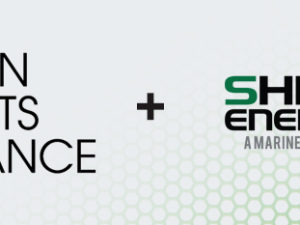We are surrounded by data. But data by itself is useless – other than to remind us that our world is more connected than ever before. I like Twitter for the fact that I can get information about specific people, places, or things – but I cannot keep up with the volume of information it generates. There is not enough time in the day for me to digest it all. The internet of things (IoT) has made data accessible and with that has come various analytical tools to try and help us make sense of all that data. Turning data into information is essential. However, when our world becomes saturated with data and information, what do we do with all that information? As with most things, we triage the information to prioritize what needs to be dealt with immediately and deal with the other items later, if ever.
Artificial intelligence (AI) has the capability to makes sense of all this information and to deliver meaningful actions and results. I’ve watch a particular TED Talk on AI numerous times. It’s not that I am an AI fanatic, but it makes several points about the world of data and information that resonate with me in my professional life. I work in the energy efficiency industry, where we make a software product to automate intelligent energy efficiency decisions and write those back to the building in real time. This TED Talk was interesting to me because is describes perfectly how our software is different, but complimentary to the building automation systems (BAS) that we are often compared to. It states that, “Intelligence is not a single dimension, it’s more like a symphony of different notes”. There are different types of intelligence which vary in their strength of specific competencies. A BAS is best at controlling the comfort conditions of a building, but is not designed to do so at the lowest cost possible. My company’s software, EOS, is very good at cost optimization, because it considers information that is not available to the BAS and, through the power of cloud computing, has more computing power to process all the available information. EOS is a new type of intelligence that can be layered onto the BAS which is designed for comfort control. So, there are a variety of types of artificial intelligence that will aggregate over time. Diverse types of intelligence are valuable if combined appropriately – a self-driving car is moving without a conscious (ie: human driver) and is valuable because it is not distracted reducing the risk on the road. However, the self-driving car has a variety of types of intelligence integrated into it – a navigation tool like Google Maps, speed control like cruise control, a different type of cognition to keep the car in the lane and avoiding other cars, engine combustion controls, etc. We will invent new types of thinking to solve problems that humans cannot solve or solve efficiently.
If we extend this thinking to the commercial building sector – primarily venues, healthcare facilities, commercial office buildings, and airports, we find a similar archetype. Take a building with a data lake that has a few different types of intelligence built into it. There is the security and access control system to ensure that the appropriate people are permitted to enter the building, the building automation system to ensure that the building is suitable and comfortable to be occupied, the fire control systems to detect, notify, and attempt to extinguish a fire should there be one, a communications system to connect people not physically present in front of each other that wish to communicate – the list goes on. The same is true for energy cost optimization – this is a different type of cognition than the existing building information systems.
Thinking differently is the engine of wealth and new economy. The first industrial revolution was the transition from human power to artificial power – the use of steam or combustion engines to do work. The second industrial revolution will add artificial intelligence to artificial power. AI is a new commodity that we will give intelligence to what we have electrified. Productivity is best delivered by AI, in other words, anything that can be boiled down to tasks that can be defined in terms of productivity and efficiency. Humans are good at inefficient tasks like human relations. And so, humans and AI will work harmoniously to do both inefficient tasks and efficient tasks.
The world of energy is no different. Specifically, buildings have more pieces of information available digitally that can be processed by computers for specific types of intelligence and aggregated as AI. Energy efficiency software can be categorized into two groups of software: dashboards and analytics. However, applying artificial intelligence to the analytics is inevitable. First, it is not efficient for the building operators to manage this task and secondly, this is a new type of artificial intelligence that combines high volumes of real-time data for a variety of sources in which humans are not capable of processing. So, if you must, consider dashboards and analytics as an interim step to autonomous energy cost optimization or step up to the plate now with SHIFT Energy’s Energy Optimization System – EOS.
Daryl Letto, Vice President of Solutions Engineering for SHIFT Energy is a professional engineer and certified energy manager. His experience as a process engineer in the environmental field lead him to energy efficiency where he has spent the last 7-year working with the commercial and industrial sectors, integrating their loads for autonomous energy efficiency and utility-scale optimizations.



